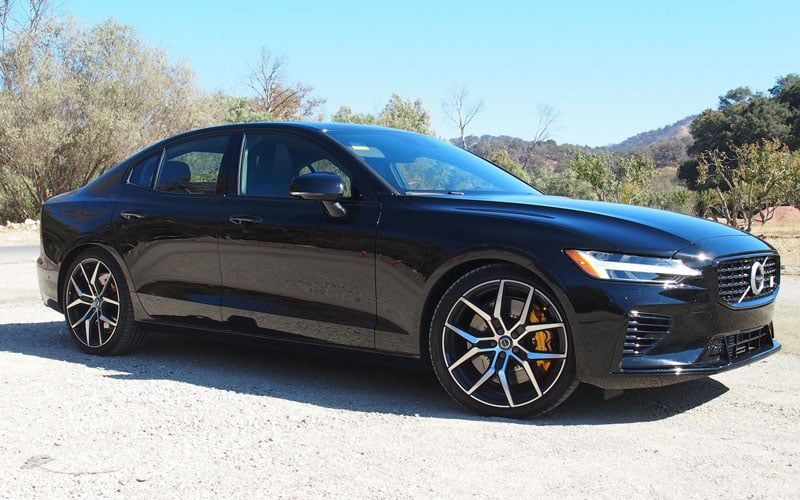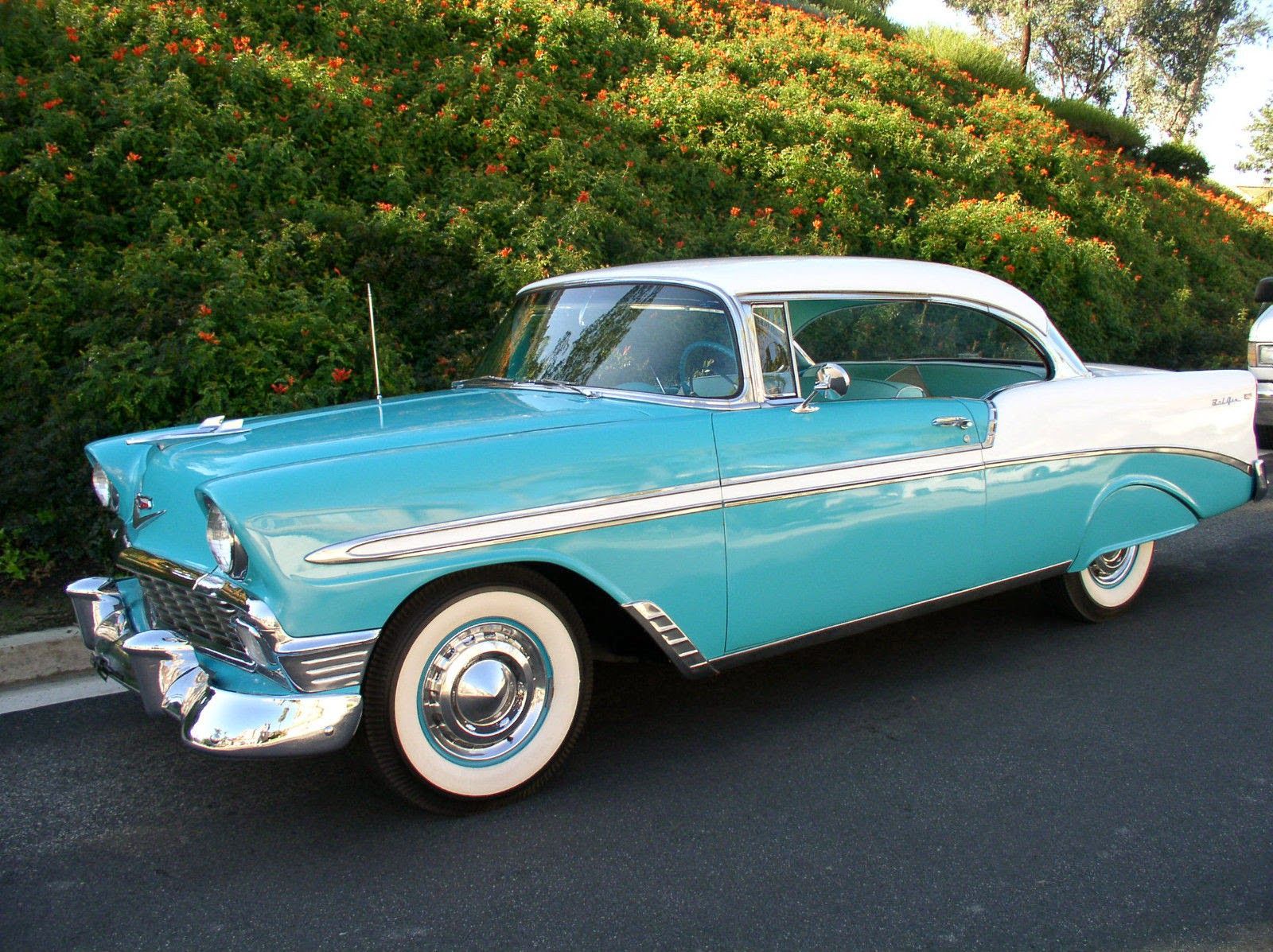
Classic cars have always captivated enthusiasts, turning heads on the road and proving to be smart investments. In recent years, some vintage vehicles have seen their values soar, drawing attention from collectors and investors alike. For decades, classic cars have offered a superior investment return compared to gold or bonds. The overall market index for classic cars has grown by almost 200 percent in the last few years. Understanding which models are appreciating in value is crucial for both car lovers and potential investors. The United States leads the global classic car market, with projected revenues reaching $18.77 billion by 2024, according to Statista.
These automobiles provide a distinct blend of style, historical narrative, and financial upside. American classics, for instance, possess a unique allure in automotive collectibles. Their timeless designs, potent engines, and the romanticism of past eras make them highly desirable. Factors such as rarity, historical significance, and robust collector demand are key drivers of their appreciating worth. Hagerty’s definition indicates approximately 43 million collector vehicles in the U.S., accounting for about 16% of all registered vehicles. These cars frequently mark pivotal moments in automotive design and technology, rendering them invaluable.
The market for these classics benefits from increasing recognition of their cultural and aesthetic importance, pushing prices upward as more buyers seek a piece of automotive history. While sought-after examples command enormously high prices, sometimes costing up to a few hundred times more than they did when they were new, even some previously inexpensive models now sit in the six-figure range. This phenomenon truly highlights the dynamic nature of the collector’s market. We will now explore seven standout champions from the classic car sector that have demonstrated remarkable appreciation.
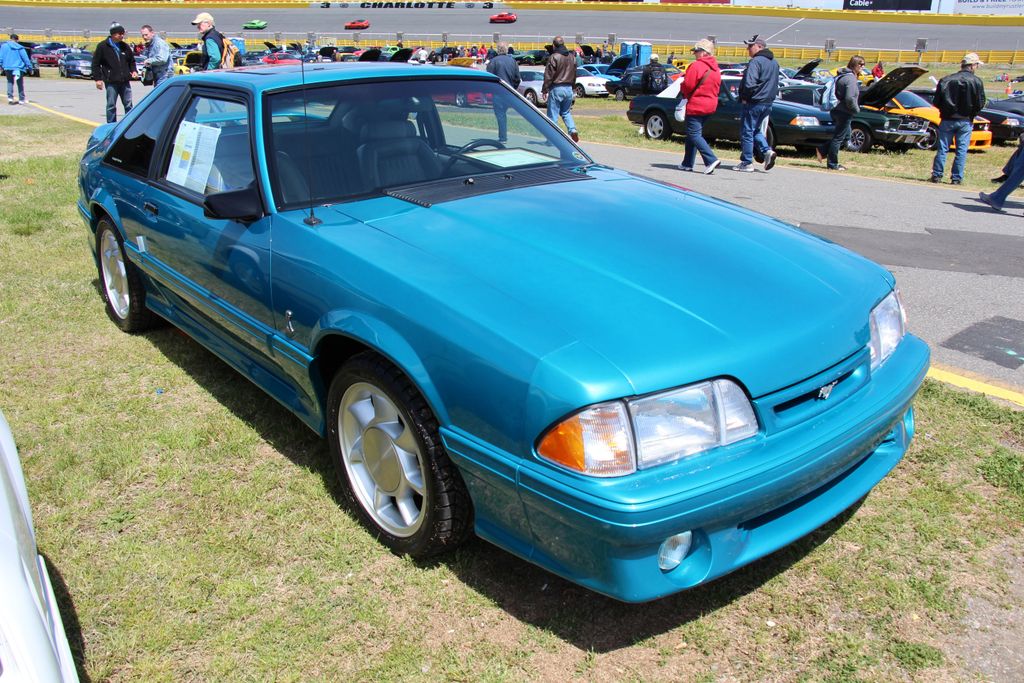
1. **Ford Mustang (1964-1968)**The early Ford Mustang models are quintessential American muscle cars, instantly recognizable for their sleek design and powerful engines. Introduced in the mid-1960s, these vehicles rapidly captured the hearts of a generation, embodying a spirit of freedom and accessible performance. Their aesthetic appeal and robust engineering established a legend that continues to resonate with enthusiasts today.
Due to their profound historical significance, these Mustangs are not merely automobiles but cultural artifacts. They represent a pivotal moment in American automotive history, democratizing sports car ownership and igniting the muscle car era. This indelible mark on popular culture ensures their enduring popularity and sustained demand in the collector’s market.
The investment potential of these early Mustangs has become increasingly evident. Many car collectors consider them a must-have in their garages, driving up their market value. Whether a meticulously restored coupe or a performance-oriented Shelby GT variant, the appreciation for these models underscores their status as both a passionate pursuit and a wise financial acquisition for those looking to diversify with tangible assets.
Car Model Information: 2008 Ford Mustang GT Premium
Name: Ford Mustang
Caption: 2018 Ford Mustang GT 5.0
Aka: Ford T5 (Germany)
Manufacturer: Ford Motor Company
Production: March 1964 – present
ModelYears: 1965–present
Class: Unbulleted list
BodyStyle: Unbulleted list
Layout: Front-engine, rear-wheel-drive layout
Categories: 1970s cars, 1980s cars, 1990s cars, 2+2 coupés, 2000s cars
Summary: The Ford Mustang is an American automobile manufactured and marketed by Ford since 1964, as Ford’s longest nameplate in continuous production. Currently in its seventh generation, it is the fifth-best selling Ford car nameplate. The namesake of the “pony car” automobile segment, the Mustang was developed as a highly styled line of sporty coupes and convertibles derived from existing model lines, initially distinguished by its pronounced “long hood, short deck” proportions.
Originally predicted to sell 100,000 vehicles yearly, the 1965 Mustang became the most successful vehicle launch since the 1927 Model A. Introduced on April 17, 1964 (16 days after the Plymouth Barracuda), over 400,000 units were sold in its first year; the one-millionth Mustang was sold within two years of its launch. In August 2018, Ford produced the 10-millionth Mustang; matching the first 1965 Mustang, the vehicle was a 2019 Wimbledon White convertible with a V8 engine.
The success of the Mustang launch led to multiple competitors from other American manufacturers, including the Chevrolet Camaro and Pontiac Firebird (1967), AMC Javelin (1968), and Dodge Challenger (1970). It also competed with the Plymouth Barracuda, which was launched around the same time. The Mustang also had an effect on designs of coupes worldwide, leading to the marketing of the Toyota Celica and Ford Capri in the United States (the latter, by Lincoln-Mercury). The Mercury Cougar was launched in 1967 as a unique-bodied higher-trim alternative to the Mustang; during the 1970s, it included more features and was marketed as a personal luxury car.
From 1965 until 2004, the Mustang shared chassis commonality with other Ford model lines, staying rear-wheel-drive throughout its production. From 1965 to 1973, the Mustang was derived from the 1960 Ford Falcon compact. From 1974 until 1978, the Mustang (denoted Mustang II) was a longer-wheelbase version of the Ford Pinto. From 1979 until 2004, the Mustang shared its Fox platform chassis with 14 other Ford vehicles (becoming the final one to use the Fox architecture). Since 2005, Ford has produced two generations of the Mustang, each using a distinct platform unique to the model line.
Through its production, multiple nameplates have been associated with the Ford Mustang series, including GT, Mach 1, Boss 302/429, Cobra (separate from Shelby Cobra), and Bullitt, along with “5.0” fender badging (denoting 4.9 L OHV or 5.0 L DOHC V8 engines).
Get more information about: Ford Mustang
Buying a high-performing used car >>>
Brand: Ford Model: Mustang
Price: $16,785 Mileage: 81,832 mi.

2. **Porsche 911 (1963-1989)**The Porsche 911 is a truly timeless sports car, a marvel of consistent design and engineering excellence, maintaining its fundamental silhouette for decades. From its 1963 debut, the 911 quickly established itself as a benchmark for performance and driver engagement. Its pure, uncluttered styling and distinctive profile have contributed to an unparalleled legacy in automotive design.
What truly sets early models apart, and significantly boosts their appreciating value, is their exceptional driving dynamics. These cars are celebrated for their excellent handling, offering a visceral connection between driver and road that few others can match. The unique rear-engine layout, while challenging for some, delivers a distinctive driving character that Porsche purists actively seek.
The rising value of the Porsche 911, particularly its early generations, directly reflects its esteemed status as one of the most respected sports cars ever produced. It’s an investment-grade vehicle offering both exhilarating performance and a proven track record of financial appreciation. For collectors and investors, a well-preserved early 911 represents not just a car, but a piece of motoring heritage with considerable capital growth potential.
Car Model Information: 2022 Porsche 911
Name: Porsche 911
Caption: The 1 millionth 911 produced on display at Volkswagen Group Forum, Berlin
Designer: Ferdinand Alexander Porsche
Manufacturer: Porsche
Production: September 1964 – present
Assembly: Stuttgart,Baden-Württemberg
Class: Sports car
BodyStyle: unbulleted list
Related: unbulleted list
Layout: Rear-engine design,rear-wheel drive
Predecessor: Porsche 356
Categories: 1970s cars, 1980s cars, 1990s cars, 2+2 coupés, 2000s cars
Summary: The Porsche 911 model series (pronounced Nine Eleven or in German: Neunelf) is a family of German two-door, high performance rear-engine sports cars, introduced in September 1964 by Porsche AG of Stuttgart, Germany, and now in its eighth generation. All 911s have a rear-mounted flat-six engine, and usually 2+2 seating, except for special 2-seater variants. Originally, 911s had air-cooled engines, and torsion bar suspension, but the 911 has been continuously enhanced, and evolved across generations. Though the 911 core concept has remained largely unchanged, water-cooled engines were introduced with the 996 series in 1998, and front and rear suspension have been replaced by Porsche-specific MacPherson suspension up front, and independent multi-link rear suspension.
The 911 has been raced extensively by private and factory teams, in a variety of classes. It is among the most successful competition cars. In the mid-1970s, the naturally aspirated 911 Carrera RSR won world championship races including Targa Florio and the 24 Hours of Daytona. The 911-derived 935 turbo also won the 24 Hours of Le Mans in 1979. Porsche won the World Championship for Makes in 1976, 1977, 1978, and 1979 with 911-derived models.
In a 1999 poll to determine the Car of the Century, the 911 ranked fifth — one of two in the top five that had remained continuously in production (the original Beetle remained in production until 2003). The one millionth example was manufactured in May 2017 and is in the company’s permanent collection.
Get more information about: Porsche 911
Buying a high-performing used car >>>
Brand: Porsche Model: 911
Price: $128,000 Mileage: 19,332 mi.
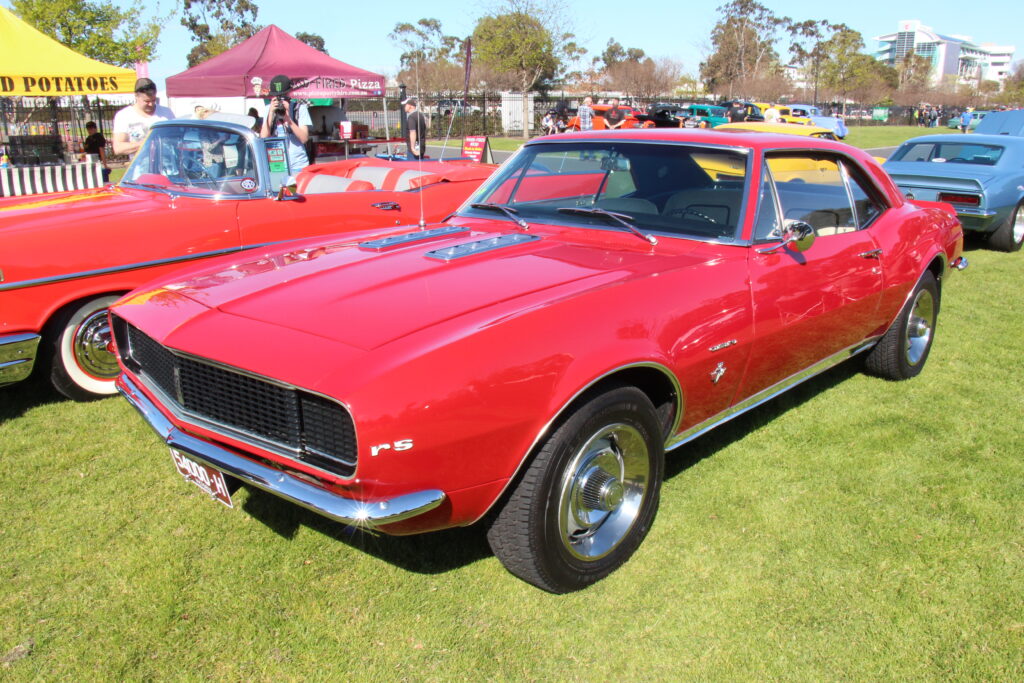
3. **Chevrolet Camaro (1967-1969)**The first-generation Chevrolet Camaro (1967-1969) served as a direct and formidable competitor to the Ford Mustang in the burgeoning pony car segment. These early Camaros quickly garnered a passionate following, admired for their aggressive looks and robust, reliable performance. Their introduction marked a significant chapter in the storied rivalry that defined an era of American motoring.
Beyond captivating aesthetics, these cars offered remarkable versatility, catering to diverse automotive tastes. They were available in various configurations, from economical six-cylinder versions to high-powered SS and Z/28 variants designed for enthusiastic performance. This breadth of choice contributed to their widespread appeal and deep integration into American car culture.
The increasing value of these first-generation Camaros is profoundly driven by a powerful wave of nostalgia, coupled with their undisputed place in American car culture. As a quintessential muscle car, their market appreciation makes them a compelling asset for collectors. Owning one is possessing a tangible link to a dynamic and iconic period of automotive history, promising both emotional and financial returns.
Car Model Information: 2018 Chevrolet Camaro 1LS
Name: Chevrolet Camaro
Manufacturer: Chevrolet
Production: 1966–2002,2009–2023
ModelYears: 1967–2002,2010–2024
Class: Pony car
BodyStyle: coupe,convertible
Platform: GM F platform,GM Zeta platform,GM Alpha platform
Layout: Front-engine, rear-wheel-drive layout
Categories: 1970s cars, 1980s cars, 1990s cars, 2+2 coupés, 2000s cars
Summary: The Chevrolet Camaro is a mid-size American automobile manufactured by Chevrolet, classified as a pony car. It first went on sale on September 29, 1966, for the 1967 model year and was designed to compete with the Ford Mustang. The Camaro shared its platform and major components with the Firebird, produced by General Motors’ Pontiac division that was also introduced for the 1967 model year.
Four distinct generations of the Camaro were developed before production ended in 2002. The nameplate was revived on a concept car that evolved into the fifth-generation Camaro; production started on March 16, 2009.
Production of the sixth generation of the Camaro ended in December 2023, for the 2024 model year.
Get more information about: Chevrolet Camaro
Buying a high-performing used car >>>
Brand: Chevrolet Model: Camaro
Price: $18,785 Mileage: 69,196 mi.
Read more about: From Showroom Shocker to Silver Screen Legend: 6 Automotive Flops That Conquered Hollywood
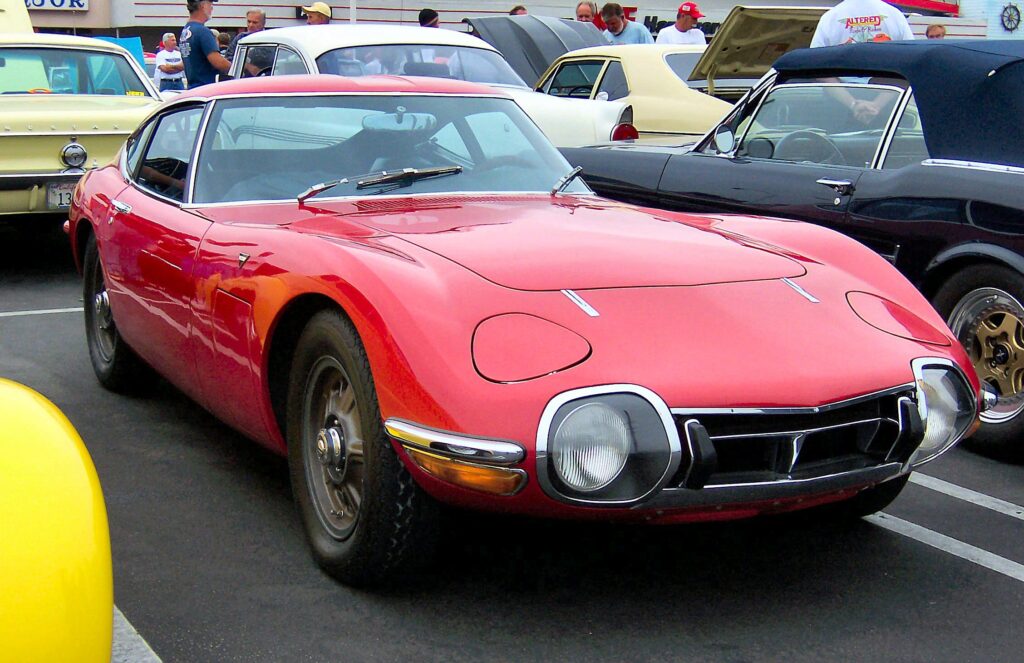
4. **Toyota 2000GT (1967-1970)**The Toyota 2000GT (1967-1970) holds a distinctive place in automotive history, frequently hailed as Japan’s first supercar. This exquisite machine made a profound statement, showcasing Japan’s capability to craft world-class performance vehicles with impeccable design and engineering. It shattered preconceived notions and redefined expectations for Japanese automobiles globally.
Rarity is a cornerstone of the 2000GT’s extraordinary value. With only 351 units ever produced, this scarcity inherently elevates its desirability among elite collectors. Each car is a testament to meticulous craftsmanship and limited-run exclusivity, making it a highly coveted treasure in the collector’s market.
The car’s elegant design, with its long hood, sleek fastback profile, and pop-up headlights, continues to captivate. This timeless beauty, combined with its extreme rarity, has caused its prices to skyrocket in recent years, placing it among the most valuable classics. For investors, the Toyota 2000GT represents an opportunity to own a piece of pioneering automotive artistry that consistently commands astronomical figures at auction, a true blue-chip asset.
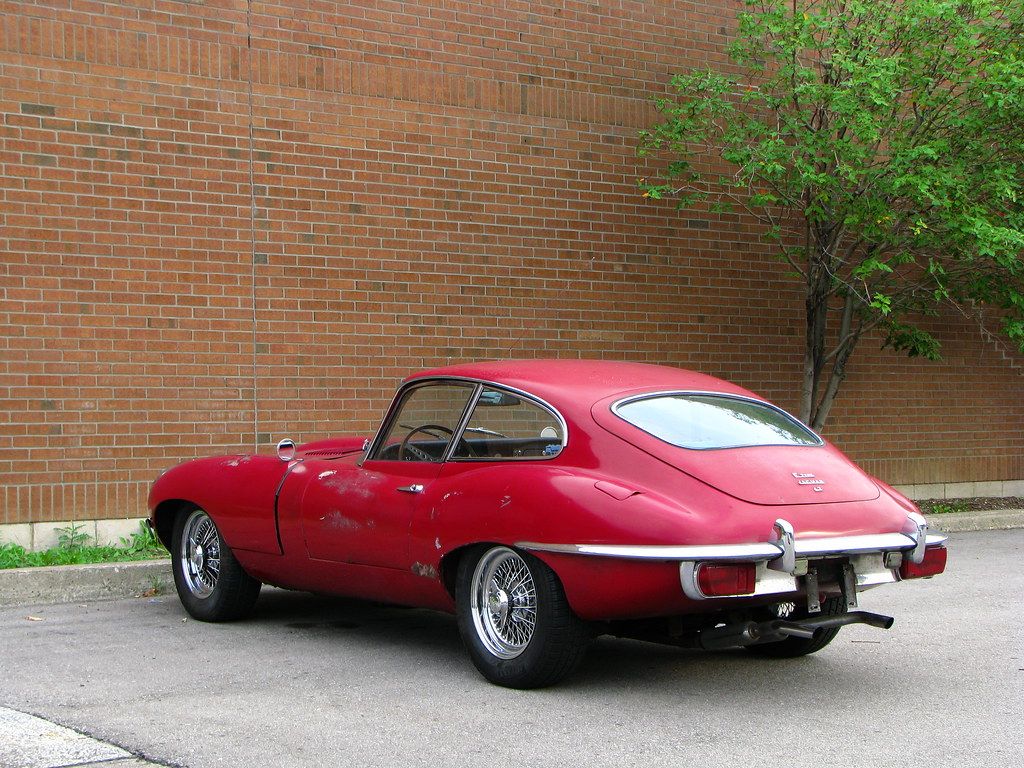
5. **Jaguar E-Type (1961-1975)**The Jaguar E-Type (1961-1975) is widely considered one of the most beautiful cars ever made, a sentiment echoed by Enzo Ferrari himself. Its sensuous curves, elongated hood, and iconic proportions immediately established it as a design masterpiece upon its unveiling. This visual splendor, coupled with impressive performance for its era, forged an instant legend.
These British sports cars quickly became highly sought after by global collectors, captivated by their blend of sophisticated style and spirited driving dynamics. The E-Type’s design transcended mere aesthetics, offering a driving experience that was both engaging and luxurious. Its iconic status was cemented by its presence in popular culture and undeniable allure.
The E-Type’s enduring appeal is fueled by its timeless design and Jaguar’s rich racing heritage, both significantly contributing to its rising value. As a quintessential classic, it continues to command strong prices in the secondary market. For discerning collectors, an E-Type represents not just an acquisition, but an investment in automotive art that consistently appreciates, embodying elegance, performance, and historical prestige.
Car Model Information: 1971 Jaguar E-Type Restomod
Sp: uk
Name: Jaguar E-Type
Caption: 1961 E-Type Series 1 3.8-Litre, the first production model of this open two-seater
Aka: Jaguar XK-E (North America),Jaguar V-12
Manufacturer: Jaguar Cars
Production: 1961–1974
Class: Sports car
Predecessor: Jaguar XK150
Related: Jaguar D-Type,Jaguar XJ13
Successor: Jaguar XJS
Layout: FMR layout
Assembly: Coventry,England
Designer: Malcolm Sayer
Categories: 1970s cars, 2+2 coupés, All Wikipedia articles written in British English, All articles with dead external links, All articles with specifically marked weasel-worded phrases
Summary: The Jaguar E-Type, or the Jaguar XK-E for the North American market, is a British front mid-engined sports car that was manufactured by Jaguar Cars Ltd from 1961 to 1974. Its sleek appearance, advanced technologies, high performance, and competitive pricing established it as an icon. The E-Type’s claimed 150 miles per hour (240 km/h) top speed, sub-7-second 0 to 60 mph (97 km/h) acceleration, largely unitary body construction, front and rear independent suspension with disc brakes, mounted inboard at the rear, and rack-and-pinion steering spurred industry-wide changes.
The E-Type was based on Jaguar’s D-Type racing car, which had won the 24 Hours of Le Mans for three consecutive years beginning in 1955.
The E-Type employed what was, for the early 1960s, a novel design principle, with a front subframe carrying the engine, front suspension and front bodywork bolted directly to the body tub. No ladder frame chassis, as was common at the time, was needed and as such the first cars weighed only 1,315 kg (2,899 lb).
It is rumored that, on its debut on 15 March 1961, Enzo Ferrari called it “the most beautiful car ever made”, but this statement is not fully confirmed. In 2004, Sports Car International magazine placed the E-Type at number one on their list of Top Sports Cars of the 1960s. In March 2008, the Jaguar E-Type ranked first in The Daily Telegraph’s online list of the world’s “100 most beautiful cars” of all time.
Get more information about: Jaguar E-Type
Buying a high-performing used car >>>
Brand: Jaguar Model: E-Type
Price: $64,900 Mileage: 2,455 mi.
Read more about: Navigating the Shifting Market: Nine Iconic Classic Sports Cars Set for Significant Value Declines in 2025

6. **Volkswagen Bus (1950-1967)**The Volkswagen Bus, affectionately known as the Type 2 or Microbus, is more than a utility vehicle; it’s an undeniable icon of 1960s counterculture and a symbol of freedom and adventure. Its distinctive, boxy shape and utilitarian yet charming design immediately set it apart. This unique character has fostered deep affection among generations of enthusiasts.
These vans are cherished for their unique styling and remarkably versatile interior, adaptable for everything from family transport to bohemian road trips. The Microbus embodies a lifestyle, making it highly desirable for those seeking a tangible connection to a celebrated era. Its historical significance is paramount, capturing the spirit of a cultural movement and social transformation.
In recent years, the Volkswagen Bus has become increasingly valuable, as both casual enthusiasts and serious collectors recognize its cultural and historical importance. Well-preserved and meticulously restored examples can now fetch surprisingly high prices at auctions. This appreciation reflects a growing demand for unique, character-filled classics that offer both nostalgic charm and solid investment potential in the burgeoning collector market.
Car Model Information: 2021 Volkswagen Atlas Cross Sport 3.6L V6 SEL Premium
Categories: All set index articles, Articles with short description, Former disambiguation pages converted to set index articles, Set index articles, Short description is different from Wikidata
Summary: Volkswagen Bus or Volkswagen Van is a type of vehicle produced by Volkswagen/Volkswagen Commercial Vehicles.
There have been a number of notable versions of it produced.
Get more information about: Volkswagen Bus
Buying a high-performing used car >>>
Brand: Volkswagen Model: Bus
Price: Not Priced Mileage: 42,702 mi.

7. **Datsun 240Z (1969-1978)**The Datsun 240Z, introduced in 1969, was pivotal in establishing Japanese cars as serious contenders in the global sports car market. It offered an irresistible combination of excellent performance, stylish aesthetics, and a significantly lower price point than its European rivals. This made high-performance motoring accessible to a wider audience, democratizing the sports car experience.
These cars are widely admired for their sleek, long-hood, short-deck design, drawing inspiration from European grand tourers while carving its own distinctive identity. Coupled with a fun and engaging driving experience, the 240Z quickly became a favorite among enthusiasts seeking thrills without the premium price tag. Its balanced chassis and responsive engine provided exhilarating journeys.
The rising value of the Datsun 240Z is a clear reflection of a growing appreciation for classic Japanese sports cars in the collector community. As a testament to reliability and performance, well-maintained examples are increasingly sought after. For investors, the 240Z represents an intelligent entry into the classic car market, offering a compelling blend of historical significance, driving enjoyment, and strong capital appreciation.
Continuing our exploration into the high-stakes world of classic car investments, we now turn our attention to seven more automotive legends. These vehicles not only boast unparalleled engineering and design but have also demonstrated remarkable appreciation, cementing their status as prime opportunities for discerning collectors and investors. Their rarity and enduring appeal make them invaluable additions to any portfolio, promising both a passionate pursuit and a sound financial return.
Car Model Information: 1972 Datsun 240Z
Name: Nissan Fairlady Z (Datsun 240Z, 260Z, and 280Z)
Aka: unbulleted list
Manufacturer: Nissan
Production: 1969–1978
Class: Sports car
Layout: Front-engine, rear-wheel-drive layout
Assembly: Hiratsuka, Kanagawa
BodyStyle: unbulleted list
Designer: Yoshihiko Matsuo
Predecessor: Datsun Sports
Successor: Nissan Fairlady Z (S130)
Caption: 1970–1973 Nissan Fairlady Z
Categories: 1970s cars, All Wikipedia articles written in American English, All articles with unsourced statements, Articles with short description, Articles with unsourced statements from February 2021
Summary: The Nissan S30, sold in Japan as the Nissan Fairlady Z but badged as the Datsun 240Z, 260Z, and 280Z for export, are 2-seat sports cars and 2+2 GT cars produced by Nissan from 1969 until 1978. The S30 was conceived of by Yutaka Katayama, the President of Nissan Motor Corporation U.S.A., and designed by a team led by Yoshihiko Matsuo, the head of Nissan’s Sports Car Styling Studio. It is the first car in Nissan’s Z series of sports cars.
The S30 had four-wheel independent suspension and a powerful straight-six engine with an overhead camshaft, features identified with far more expensive premium European sports cars and coupés such as the Jaguar E-Type and BMW 2800 CS, but absent from similarly priced sports cars such as the Alfa Romeo Spider, MGB and Opel GT, which had smaller four-cylinder engines and rear live axles. The S30’s styling, engineering, relatively low price, and impressive performance resonated with the public, received a positive response from both buyers and the motoring press, and immediately generated long waiting lists.
As a halo car, the S30 broadened the acceptance of Japanese carmakers beyond their image as producers of practical and reliable but prosaic and unfashionable economy cars. Datsun’s growing dealer network—compared to limited production imported sports cars manufactured by Jaguar, BMW, Porsche, Alfa Romeo, and Fiat—ensured both easy purchase and ready maintenance.
The S30 was initially sold alongside the smaller four-cylinder Datsun Sports, which was dropped from production in 1970. The S30 240Z is unrelated to the later 240SX, sold as the Silvia in Japan.
Get more information about: Nissan Fairlady Z (S30)
Buying a high-performing used car >>>
Brand: Datsun Model: 240Z
Price: $32,995 Mileage: 122,000 mi.
Read more about: Timeless Legends: 15 Classic Cars from the 60s and 70s That Deserve a Modern MotorTrend Revival.
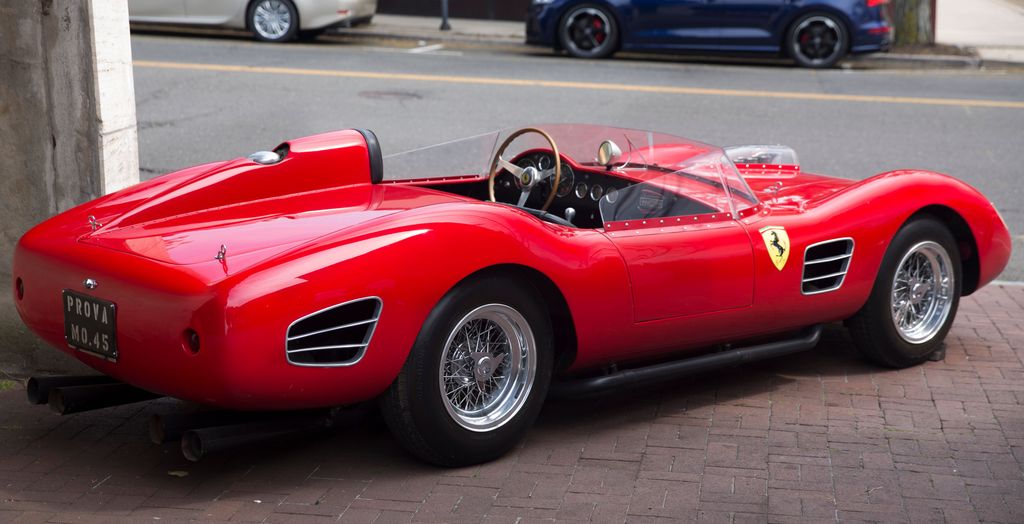
8. **Ferrari 250 GTO (1962-1964)**The Ferrari 250 GTO stands as an unparalleled icon, widely recognized as one of the most valuable cars in the world. Its legendary status is underscored by extreme rarity, with only 36 units ever made. This limited production number immediately positions it at the pinnacle of automotive collectibles, making each example a treasure.
Beyond its scarcity, the 250 GTO boasts a formidable racing pedigree. These cars were incredibly successful in competition, dominating race tracks and securing their place in motorsport history. This blend of track prowess and exquisite craftsmanship has led many to consider it the ultimate classic Ferrari.
For investors, the financial trajectory of the 250 GTO is nothing short of astronomical. Its values have reached extraordinary levels, with some examples selling for tens of millions of dollars at auction. This consistent appreciation solidifies its position as a blue-chip asset, offering substantial capital growth potential alongside its historical significance.
Car Model Information: 2019 Subaru Forester Premium
Name: Ferrari 250 GTO
Caption: 1963 Ferrari 250 GTO (chassis 4153GT)
Manufacturer: Ferrari
Production: 1962–1964,(36 produced)
Designer: Giotto Bizzarrini,Scaglietti
Class: Sports car
BodyStyle: berlinetta
Related: Ferrari 330#330 LMB,Ferrari P#250 LM
Layout: FR layout
Engine: 2,953 cc,Ferrari Colombo engine#250,Overhead camshaft#Single Overhead camshatf,Weber carburetor,Compression ratio
Powerout: 300 PS
Abbr: on
Order: flip @ 5500 rpm
Transmission: Manual transmission
Wheelbase: 2400 mm
Length: 4325 mm
Width: 1600 mm
Height: 1210 mm
Weight: convert
Predecessor: Ferrari 250 GT SWB
Successor: Ferrari 250 LM,Ferrari 288 GTO
Categories: All articles lacking reliable references, All articles needing additional references, All articles with bare URLs for citations, All articles with unsourced statements, Articles lacking reliable references from March 2022
Summary: The Ferrari 250 GTO is a grand tourer produced by Ferrari from 1962 to 1964 for homologation into the FIA’s Group 3 Grand Touring Car category. It was powered by Ferrari’s Tipo 168/62 Colombo V12 engine. The “250” in its name denotes the displacement in cubic centimeters of each of its cylinders; “GTO” stands for Gran Turismo Omologato, Italian for “Grand Touring Homologated”.
Just 36 of the 250 GTOs were manufactured between 1962 and 1964. This includes 33 cars with 1962–63 bodywork (Series I) and three with 1964 (Series II) bodywork similar to the Ferrari 250 LM. Four of the older 1962–1963 (Series I) cars were updated in 1964 with Series II bodies.
When new, the 250 GTO cost $18,000 in the United States, with buyers personally approved by Enzo Ferrari and his dealer for North America, Luigi Chinetti. This model has since become highly desired by automobile collectors and sales have repeatedly set price records. The current record for world’s most expensive Ferrari was set in June 2018 when a 1963 250 GTO (chassis 4153GT) was sold in a private sale for $70 million.
In 2004, Sports Car International placed the 250 GTO eighth on their list of Top Sports Cars of the 1960s, and nominated it the top sports car of all time. Similarly, Motor Trend Classic placed the 250 GTO first on a list of the “Greatest Ferraris of All Time”. Popular Mechanics named it the “Hottest Car of All Time”.
Get more information about: Ferrari 250 GTO
Buying a high-performing used car >>>
Brand: Ferrari Model: 250 GTO
Price: $21,123 Mileage: 53,226 mi.
Read more about: Everyone Wants These 14 Classic Cars In Their Garage: A Deep Dive for Enthusiasts
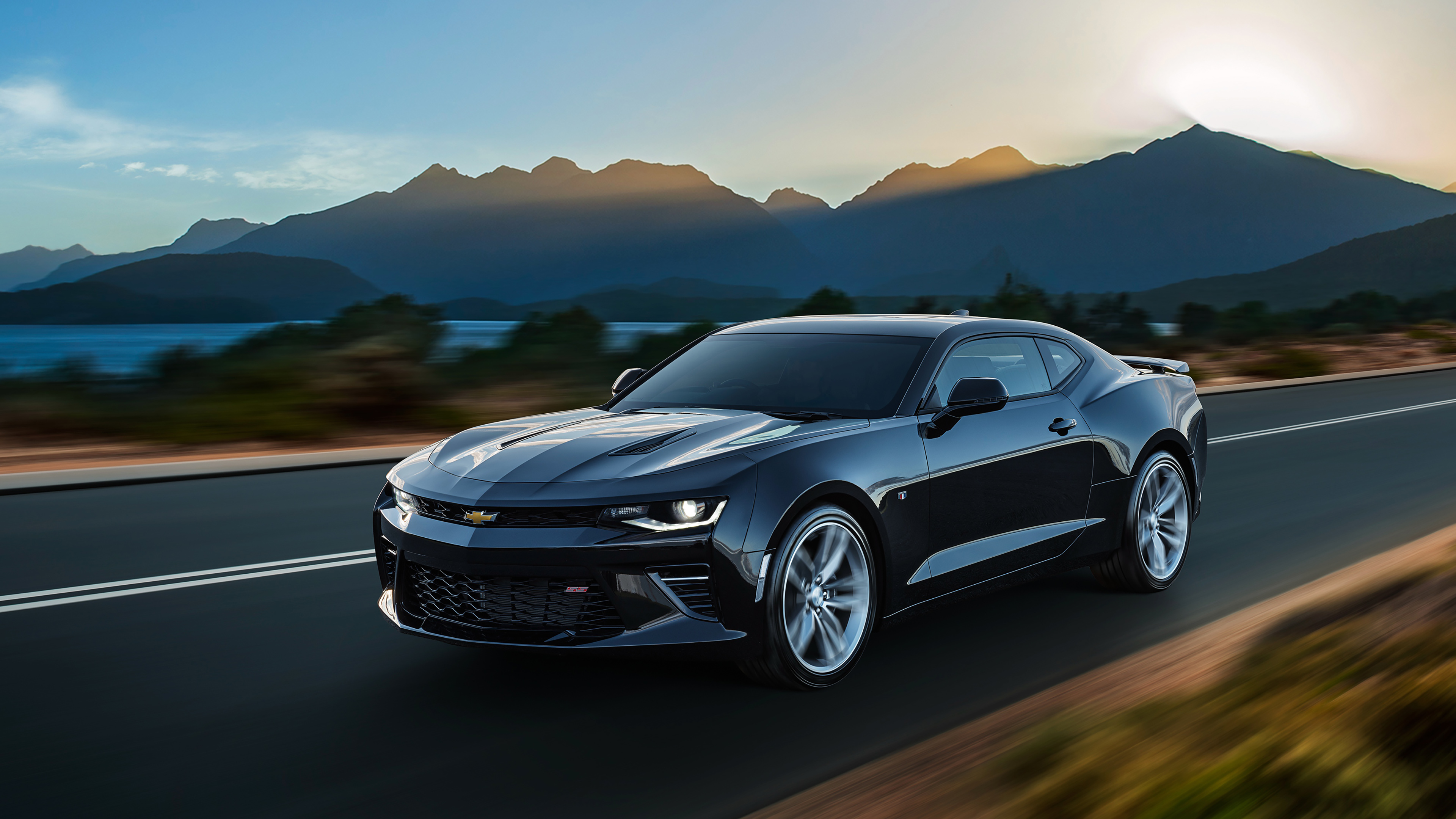
9. **Chevrolet Corvette (1963-1967)**The second-generation Chevrolet Corvette, often referred to as the C2, is a highly prized model among collectors. The 1963 split-window coupe, in particular, commands immense desirability and remains a quintessential piece of American automotive design.
These cars represent a golden age of American sports car design, characterized by aggressive yet elegant lines and powerful performance. The C2 Corvette successfully delivered a perfect blend of style and exhilarating performance, distinguishing it from its contemporaries and establishing its enduring legacy.
Its market value has shown a steady increase over time, reflecting a growing recognition of its profound significance in automotive history. As more enthusiasts and investors acknowledge its pivotal role, the C2 Corvette continues to appreciate as a tangible asset with cultural importance.
Owning a Corvette from this era means possessing a piece of automotive art that consistently captures attention and commands respect. It’s an investment that offers both the thrill of ownership and a proven track record of financial appreciation in the collector’s market.
Car Model Information: 2025 Chevrolet Corvette Stingray w/3LT
Name: Chevrolet Corvette
Caption: 2021 Chevrolet Corvette C8
Manufacturer: Chevrolet
Production: 1953–present
ModelYears: bulleted list
Assembly: bulleted list
Class: Sports car
BodyStyle: coupé
Layout: Front-engine, rear-wheel-drive layout,Rear mid-engine, rear-wheel-drive layout
Categories: 1950s cars, 1960s cars, 1970s cars, 1980s cars, 1990s cars
Summary: The Chevrolet Corvette is a line of American two-door, two-seater sports cars manufactured and marketed by General Motors under the Chevrolet marque since 1953. Throughout eight generations, indicated sequentially as C1 to C8, the Corvette is noted for its performance, distinctive styling, lightweight fiberglass or composite bodywork, and competitive pricing. The Corvette has had domestic mass-produced two-seater competitors fielded by American Motors, Ford, and Chrysler; it is the only one continuously produced by a United States auto manufacturer. It serves as Chevrolet’s halo car.
In 1953, GM executives accepted a suggestion by Myron Scott, then the assistant director of the Public Relations department, to name the company’s new sports car after the corvette, a small, maneuverable warship. Initially, a relatively modest, lightweight 6‑cylinder convertible, subsequent introductions of V8 engines, competitive chassis innovations, and rear mid-engined layout have gradually moved the Corvette upmarket into the supercar class. In 1963, the second generation was introduced in coupe and convertible styles. The first three Corvette generations (1953–1982) employed body-on-frame construction, and since the C4 generation, introduced in 1983 as an early 1984 model, Corvettes have used GM’s unibody Y‑body platform. All Corvettes used front mid-engine configuration for seven generations, through 2019, and transitioned to a rear mid-engined layout with the C8 generation.
Initially manufactured in Flint, Michigan, and St. Louis, Missouri, the Corvette has been produced in Bowling Green, Kentucky, since 1981, which is also the location of the National Corvette Museum. The Corvette has become widely known as “America’s Sports Car.” Automotive News wrote that after being featured in the early 1960s television show Route 66, “the Corvette became synonymous with freedom and adventure,” ultimately becoming both “the most successful concept car in history and the most popular sports car in history.”
Get more information about: Chevrolet Corvette
Buying a high-performing used car >>>
Brand: Chevrolet Model: Corvette
Price: $92,990 Mileage: 3,779 mi.
Read more about: The Smart Money’s Secret: 8 Undervalued Classic Cars Experts Say Are Poised for Significant Appreciation
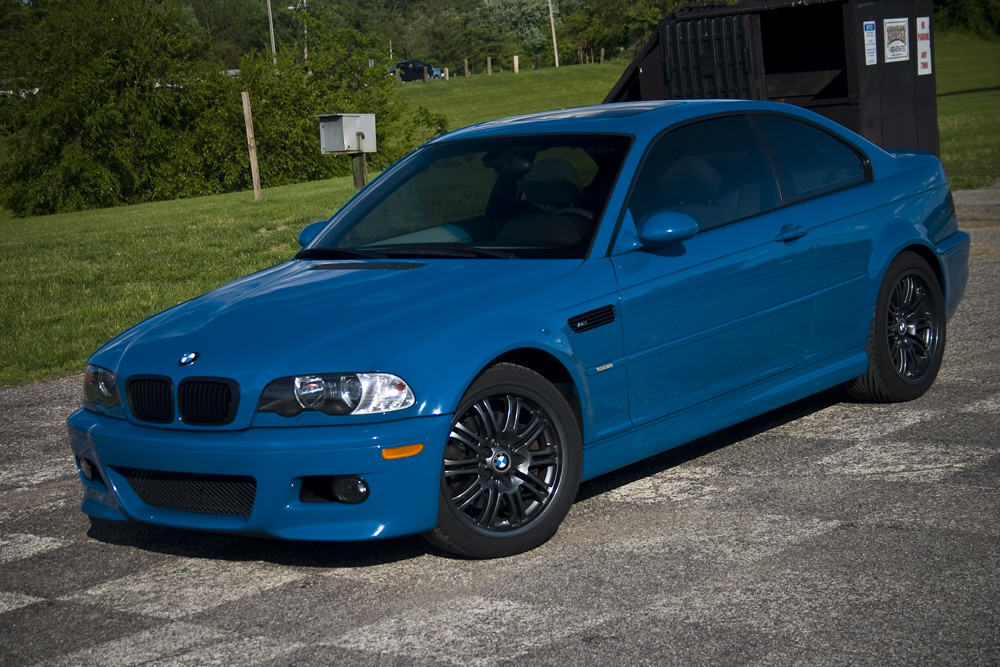
10. **BMW M3 (E30) (1986-1991)**The first-generation BMW M3, specifically the E30 chassis, was initially conceived and built for racing homologation. This high-performance version of the popular 3-Series quickly distinguished itself, becoming a benchmark for sports sedans worldwide.
These cars are revered for their excellent handling and incredibly engaging driving dynamics. The E30 M3’s precise steering, balanced chassis, and responsive engine deliver a visceral experience that captivates drivers. Its distinctive boxy design further contributes to its iconic status and timeless appeal.
As a modern classic, the E30 M3 has witnessed a significant increase in value in recent years. This appreciation is particularly pronounced for meticulously maintained examples, which are highly sought after by collectors who understand their inherent quality and performance capabilities.
For astute investors, a well-preserved E30 M3 represents a compelling opportunity. It offers a unique combination of motorsport heritage, exhilarating performance, and a strong trajectory of financial growth, making it a standout in the evolving classic car market.
Car Model Information: 2011 BMW M3 Base
Name: BMW M3
Caption: 2021 BMW M3 Competition (G80)
Manufacturer: BMW M
Production: unbulleted list
Class: Compact executive car
Layout: unbulleted list
Related: unbulleted list
Categories: 1990s cars, 2000s cars, 2010s cars, 2020s cars, All Wikipedia articles written in British English
Summary: The BMW M3 is a high-performance version of the BMW 3 Series, developed by BMW’s in-house motorsport division, BMW M GmbH. M3 models have been produced for every generation of 3 Series since the E30 M3 was introduced in 1986.
The initial model was available in a coupé body style, with a convertible body style made available soon after. M3 saloons were offered initially during the E36 (1994–1999) and E90 (2008–2012) generations. Since 2014, the coupé and convertible models have been rebranded as the 4 Series range, making the high-performance variant the M4. Variants of the 3 Series since then have seen the M3 produced as a saloon, until 2020, when the M3 was produced as an estate (Touring) for the first time, alongside the saloon variant.
Get more information about: BMW M3
Buying a high-performing used car >>>
Brand: BMW Model: M3
Price: $37,995 Mileage: 44,947 mi.

11. **Mercedes-Benz 300SL Gullwing (1954-1963)**The Mercedes-Benz 300SL Gullwing is an automotive masterpiece, instantly recognizable for its unique doors that famously open upward. This innovative design feature, revolutionary for its time, remains one of the most iconic elements in car design history.
Beyond its striking aesthetics, the 300SL Gullwing was also a technological marvel. It was one of the fastest production cars of its era, boasting advanced engineering that set new standards for performance and luxury. This potent combination of speed and sophistication cemented its legendary status.
Its advanced engineering and striking looks coalesce to make it a true automotive icon. The Gullwing’s timeless elegance and groundbreaking mechanics have ensured its enduring desirability among collectors and enthusiasts alike.
These rare cars have consistently held immense value for decades, and their worth continues to climb year after year. For those seeking an investment that embodies both historical significance and substantial financial appreciation, the 300SL Gullwing remains an unparalleled choice.
Car Model Information: 2019 Subaru Forester Premium
Name: Mercedes-Benz 300 SL
Caption: 300 SL roadster and gullwinged coupé
Manufacturer: Mercedes-Benz
Production: Mercedes-Benz 300 SLR#Uhlenhaut Coupé
Assembly: Stuttgart
Designer: Friedrich Geiger
Class: Sports car,Grand tourer
BodyStyle: coupé,Roadster (automobile)
Platform: Coupé W198 I, Roadster W198 II
Related: Mercedes-Benz 190 SL
Layout: FR layout
Engine: 2996 cc
Abbr: off
Transmission: Manual transmission
Wheelbase: 2400 mm
Length: 4520 mm
Width: 1790 mm
Height: 1300 mm
Weight: 1500 kg
Predecessor: Mercedes-Benz W194
Successor: Mercedes-Benz W113
Doors: Gull-wing door
Categories: 1960s cars, 24 Hours of Le Mans race cars, All Wikipedia articles needing clarification, All Wikipedia articles written in American English, All articles with vague or ambiguous time
Summary: The Mercedes-Benz 300 SL (chassis code W 198) is a two-seat sports car that was produced by Mercedes-Benz from 1954 to 1957 as a gullwinged coupé and from 1957 to 1963 as a roadster. The 300 SL traces its origins to the company’s 1952 racing car, the W194, and was equipped with a mechanical direct fuel-injection system that significantly increased the power output of its three-liter overhead camshaft straight-six engine.
The 300 SL was capable of reaching speeds of up to 260 km/h (162 mph), earning it a reputation as a sports car racing champion and making it the fastest production car of its time. The car’s iconic gullwing doors and innovative lightweight tubular-frame construction contributed to its status as a groundbreaking and highly influential automobile.
The designation “SL” is an abbreviation of the German term super-leicht, meaning “super-light”, a reference to the car’s racing-bred lightweight construction. The 300 SL was introduced to the American market at the suggestion of Max Hoffman, Mercedes-Benz’s United States importer at the time, who recognized the potential demand for a high-performance sports car among American buyers. The Mercedes-Benz 300 SL remains a highly sought-after classic car and is celebrated for its performance, design, and technological advancements.
Get more information about: Mercedes-Benz 300 SL
Buying a high-performing used car >>>
Brand: Mercedes-Benz Model: 300SL Gullwing
Price: $21,123 Mileage: 53,226 mi.

12. **Aston Martin DB5 (1963-1965)**The Aston Martin DB5 achieved indelible worldwide fame as James Bond’s iconic car, a role that elevated its status from a luxurious grand tourer to a global cultural phenomenon. This cinematic association has undoubtedly contributed to its immense appeal.
At its core, the DB5 is a superb example of British automotive craftsmanship, combining a powerful engine with an elegantly designed exterior. Its sophisticated styling and refined performance capabilities made it a highly desirable vehicle of its time, appealing to an exclusive clientele.
The car’s movie star status, coupled with its strictly limited production numbers, has made it an extremely valuable asset in the collector’s market. This unique confluence of cultural impact and scarcity drives its exceptional demand and high valuation.
Today, well-preserved examples of the Aston Martin DB5 are consistently worth millions of dollars. For investors, it represents not just a classic car, but a piece of cinematic and automotive history with a proven track record of significant capital appreciation.
Car Model Information: 2019 Subaru Forester Premium
Name: Aston Martin DB5
Manufacturer: Aston Martin
Production: 1963–1965 (1,059 units),2020 (25 units)
Assembly: Newport Pagnell,England
Designer: Carrozzeria Touring Superleggera
Class: Grand tourer
BodyStyle: coupé
Layout: Front-engine, rear-wheel-drive layout
Engine: DOHC,Straight-6,3995 cc
Order: flip
Abbr: on
Powerout: convert
Transmission: ZF Friedrichshafen
Length: 4570 mm
Width: 1680 mm
Wheelbase: 98.0 in
Predecessor: Aston Martin DB4
Successor: Aston Martin DB6
Doors: 2
Weight: 3311 lb
Sp: uk
Categories: All Wikipedia articles written in British English, Articles with short description, Aston Martin vehicles, CS1: unfit URL, Cars discontinued in 1965
Summary: The Aston Martin DB5 is a British grand tourer (GT) produced by Aston Martin and designed by Italian coachbuilder Carrozzeria Touring Superleggera. Originally produced from 1963 to 1965, the DB5 was an evolution of the final series of DB4. The “DB” designation is from the initials of David Brown who built up the company from 1947 onwards.
The DB5 is best-known for its role in the James Bond films. It was first driven by the fictional spy in the film Goldfinger (1964). In 2013, the car featured on a “British Auto Legends” postage stamp issued by the Royal Mail.
Get more information about: Aston Martin DB5
Buying a high-performing used car >>>
Brand: Aston Martin Model: DB5
Price: $21,123 Mileage: 53,226 mi.
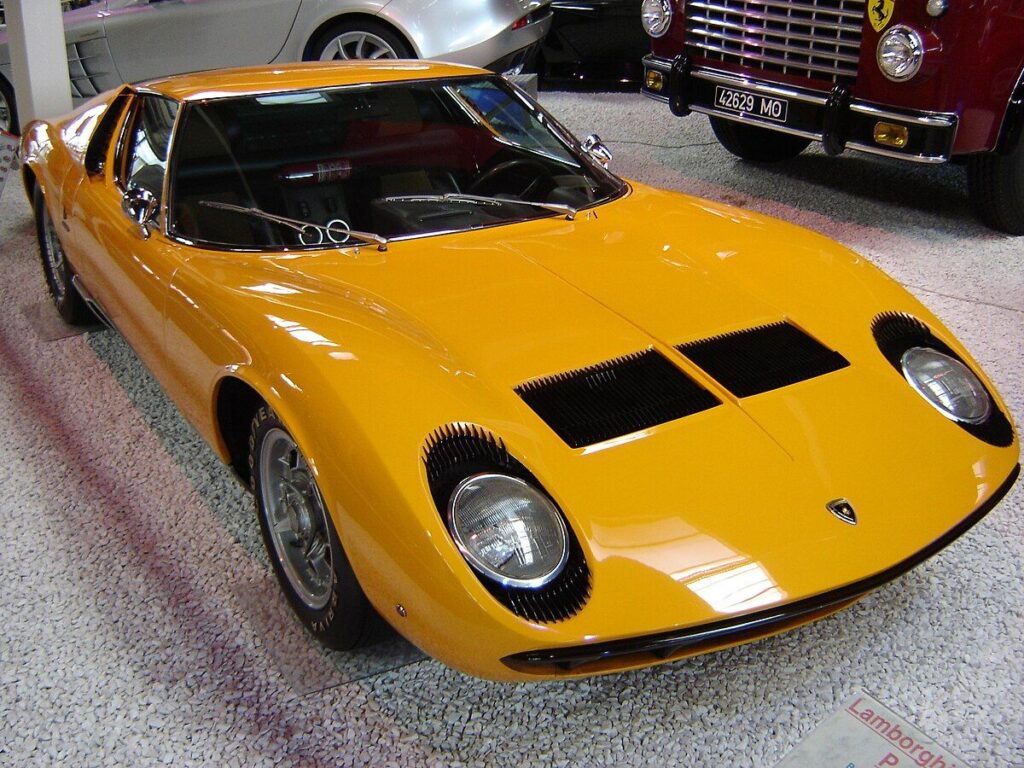
13. **Lamborghini Miura (1966-1973)**The Lamborghini Miura holds a groundbreaking position in automotive history, often credited as the world’s first true supercar. Its unveiling sent shockwaves through the industry, fundamentally redefining expectations for high-performance automobiles.
Central to its revolutionary design was its innovative mid-engine layout, which was a paradigm shift for production vehicles. This, combined with its truly stunning aesthetics, set new standards for both engineering prowess and breathtaking visual appeal in the automotive world.
The Miura’s groundbreaking engineering and undeniably breathtaking looks have made it intensely sought after by collectors globally. This immense desirability has translated into a dramatic increase in its market value in recent years, making it a standout performer.
For discerning collectors and investors, the Miura represents a pivotal moment in automotive evolution. It offers not only an unparalleled driving experience but also a robust financial asset with a strong trajectory of appreciation, solidifying its place as an iconic investment.

14. **Ford GT40 (1964-1969)**The Ford GT40 was born from a singular, ambitious goal: to beat Ferrari at the prestigious 24 Hours of Le Mans endurance race. This intense rivalry fueled its development, leading to one of the most iconic motorsport machines ever conceived.
Its mission was gloriously accomplished. The GT40 famously succeeded in winning the Le Mans race four consecutive years, a testament to its radical design, innovative engineering, and relentless pursuit of performance. This string of victories cemented its legendary status on the global stage.
These cars represent a crucial, triumphant moment in motorsport history, symbolizing American ingenuity and determination against established European dominance. Their legacy is deeply interwoven with the narrative of competitive automotive excellence.
The combination of its unparalleled racing pedigree and strictly limited production numbers has caused the values of these vehicles to soar dramatically. Original examples of the Ford GT40 now command figures in the millions, making them among the most coveted and valuable classics in existence.
Car Model Information: 1966 Ford GT40
Name: Ford GT40
Caption: Ford GT40 Mk.I in JWA Gulf Oil racing colors
Manufacturer: Ford Advanced Vehicles,John Wyer,Kar Kraft,Holman-Moody,Shelby American
Production: 1964–1969
Assembly: Slough,Los Angeles
Designer: Ron Bradshaw
Class: Group 4 (racing),Group 5 (racing),Group 6 (racing)
BodyStyle: coupé
Layout: MR layout
Engine: Cubic inch,289 CID (4737 cc) V-8,302 CID (4942 cc) V-8,427 CID (6997 cc) V-8
Transmission: Manual transmission
Wheelbase: 95 in
Abbr: on
Length: 160 in
Width: 70 in
Height: 40.5 in
Weight: convert
Successor: Ford P68
Sp: uk
Categories: 24 Hours of Le Mans race cars, All Wikipedia articles needing clarification, All Wikipedia articles written in British English, All articles needing additional references, All articles that may contain original research
Summary: The Ford GT40 is a high-performance mid-engined racing car originally designed and built for and by the Ford Motor Company to compete in 1960s European endurance racing and the World Sportscar Championship. Its specific impetus was to beat Scuderia Ferrari, which had won the prestigious 24 Hours of Le Mans race for six years running from 1960 to 1965. As rules of the time required that GT cars were built in dozens and sold, around 100 cars in total have been made, mostly as 289 cu in (4.7 L) V8-powered Mk Is, of which at least 50 were made in 1965, which allowed FIA-homologation as Group-4-Sportscar for 1966 until 1971. This gave the old MK.I car of Gulf-Wyer the chance to enter and win Le Mans in 1968 and 1969 after prototypes had been limited to 3 litre, with the performance of the Ford 7-litre-V8 in the factory 1966 Mk.II and 1967 Mk.IV prototypes causing this rule change, which also banned the 4-litre V12 Ferrari 330P4 and others after 1967. The Mk.III designation was used for some road-legal cars.
The Ford GT40 debuted in 1964, and improvements in 1965 led to Ford winning World Championships categories from 1966 to 1968. The first Le Mans win came in 1966 with three 427 cu in (7.0 L) powered Mk.II prototypes crossing the finish line together, the second in 1967 with the same engine now in quite different US-built Mk.IV prototype chassis similar to the “J-car” mule. In order to lower ever-higher race top speeds, a rule change from 1968 onwards limited prototypes to 3.0 litre Formula 1 engines; the sportscar “loophole”, however, allowed the private JW “Gulf Oil” team to win at Le Mans in 1968 and 1969 running a Mk.I with a 5.0 litre engine.
The GT40 effort began in Britain in the early 1960s when Ford Advanced Vehicles began to build the Mk I, based upon the British Lola Mk6, in Slough, UK. After disappointing race results, the engineering team was moved in 1964 to Dearborn, Michigan, US, to design and build cars by its advanced developer, Kar Kraft. All chassis versions were powered by a series of American-built Ford V8 OHV engines modified for racing.
In the 1966 Le Mans, the GT40 Mk II car broke Ferrari’s winning streak, making Ford the first American manufacturer to win a major European race since Jimmy Murphy’s Duesenberg in the 1921 French Grand Prix. In the 1967 Le Mans, the GT40 Mk IV car became the only car developed and assembled entirely (both chassis and engine) in the United States to achieve the overall win at Le Mans.
Get more information about: Ford GT40
Buying a high-performing used car >>>
Brand: Ford Model: GT40
Price: $110,000 Mileage: 13,350 mi.
Read more about: The 18 Fastest Fords Ever Built: From Muscle Cars to EVs
Investing in these classic automobiles offers a unique blend of passion and shrewd financial strategy. The cars highlighted throughout this article are not merely appreciating in value; they are dynamic assets that represent pivotal chapters in automotive history and design. Understanding the intricate factors that drive their market appeal, from historical significance to scarcity and cultural impact, is key to navigating this lucrative segment. For collectors and investors looking to diversify their portfolios with tangible assets that appreciate significantly, the classic car market presents compelling opportunities. Staying informed on market trends and expert insights can yield substantial returns, transforming a love for classic cars into a wise and rewarding investment journey.

